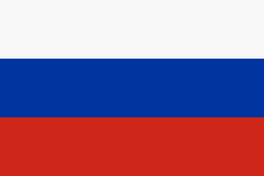Donate to Support Supercluster
Your support makes the Astronaut Database and Launch Tracker possible, and keeps all Supercluster content free.
SUPPORTSupercluster on Patreon
Your support makes the Astronaut Database and Launch Tracker possible, and keeps all Supercluster content free.
SUPPORTThis goes
to space
Arktika-M
Arktika-M is a Russian polar meteorological mission proposed and operated by the Russian Federal Space Agency (ROSCOSMOS) and assisted by the Russian Federal Service for Hydrometeorology and Environmental Monitoring (ROSHYDROMET). The project definition phase started in 2007. The scenario involves two satellites in HEO (Highly Elliptical Orbit - i.e., Molniya-type orbits) with an inclination of 63.4°, and an orbital period of approximately 12 hours. This configuration would allow a quasi-permanent coverage of high-latitude areas for weather, ice and snow monitoring as well as for telecommunications and data collection.
Major errors in statistical weather forecasts can be explained by initial data discrepancies. Most initial weather data for the Arctic regions comes from international geostationary satellites, which cannot effectively scan the Earth's high latitudes. Their angles of observation do not exceed ±70°, meaning they cannot effectively observe higher than ±60° of latitude. However, a quasi-static Molniya system is ideally suited for feature tracking in polar regions and fully complements the data obtained from geostationary satellites.
The Arktika system concept is capable of monitoring the weather and environment of the North Pole, pinpointing hydrocarbon deposits on the Arctic shelf, providing telecommunications over the hard-to-access areas and ensuring safe air traffic and commercial shipping in the region. The vast hydrocarbon deposits that will become more accessible as rising global temperatures lead to a reduction in sea ice have brought the Arctic to the centre of geopolitical wrangling between the United States, Russia, Canada, Norway, and Denmark.
The Arktika mission is planned to eventually comprise 10 Earth-orbiting satellites: the two of Arktika-M, the three commercial satellites of Arktika-MS1, the three communication and GPS satellites of Arkitka-MS2, and the two remote sensing satellites of Arktika-R. The advantage of this approach is to have full-time coverage of the polar regions which is currently not provided by the GEO satellites).
The Arktika program is supported by the Russian Economic Development Ministry. In 2010, the ministry examined the Roskosmos proposals and deemed the program necessary to create such a system, and has now proposed to the government that Arktika be introduced from 2014 onwards.
Russia plans to make Arktika an international cooperative program. The WMO (World Meteorological Organization) encourages the space agencies of the world to participate in the Arktika mission.
Credit: ESA
On this
rocket
Soyuz 2.1b/Fregat
Meet part of Roscosmos’s 21st century version of the Soyuz rocket.
One of the main upgrades included in the Soyuz 2.1b is a completely digital flight control system -- not a small task when the Soyuz rocket was first designed in the 1960s.
Stats
Height: 46.3 m (152 ft)
Diameter: 2.95 m (9 ft 8 in)
Mass: 312,000 kg (688,000 lb)
Stages: 2 or 3
This digital Flight Control System allows for greater precision and launch target accuracy.
The Soyuz 2.1b also sports an uprated Blok-I second stage engine, the RD-0124, which provides increased performance.
It was the second of three Soyuz 2 variants to fly, taking its first launch on December 27th, 2006.
The Soyuz 2.1b variant flies under two different national flags and has two different names for the same configuration.
When launching from Baikonur or Plesetsk, the rocket flies as part of the Russian Federal Space Agency, Roscosmos. For these missions, it is known as the Soyuz 2.1b.
When sold to Arianespace, the European Space Agency's launch management company, the rocket sports a few European modifications, like a European payload adapter and a European flight termination system.
When it flies for Europe, the rocket is known as the Soyuz ST-B.
Image: ESA
From this
launch site
Site No. 31/6 - Baikonur Cosmodrome, Kazakhstan
Site 31/6 has been an active launch pad since January 14th, 1961. It has been used to launch R-7A, Vostok, Voskhod, Polyot, Molniya, and previous versions of Soyuz rockets.
It is currently used exclusively to launch the Soyuz 2 rockets.
A workhorse pad for satellite and robotic missions, it took up crew launch duties for Russian missions to the Station beginning in April 2020.
Baikonur Cosmodrome
Located in southern Kazakhstan, Baikonur was the world's first spaceport and the launch site for humanity's first orbital satellite, Sputnik, and Yuri Gagarin's first human spaceflight on April 12th, 1961.
Originally built as the Soviet Union's launch base, the collapse of the Union led to the Kazakh government leasing Baikonur to Russia until 2050.
The spaceport is operated both by Roscosmos, the federal space agency of the Russian Federation, and the Russian Aerospace Forces, a branch of the Russian Armed Forces.
Image courtesy of GK Launch Services / Roscosmos
Here's where to view Arktika-M N2
Viewing Sites
GET THE SUPERCLUSTER APP
THE SUPERCLUSTER PODCAST
A podcast exploring the amazing milestones that changed space history, the wildest ideas that drive our future, and every development in this new Golden Age of Space.
Donate to support
Your support makes the Astronaut Database and Launch Tracker possible, and keeps all Supercluster content free.
SupportCOPYRIGHT 2021 SUPERCLUSTER LLC

